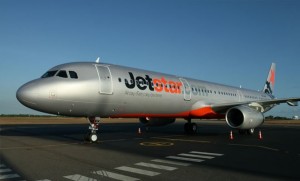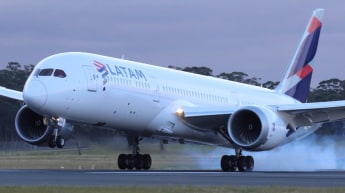
A Jetstar Airbus A321 was forced to abort landing in Singapore in 2010 after both the crew forgot to extend the landing gear in time, according to an ATSB report.
The report said the captain was distracted by his mobile phone during the aircraft’s descent while the first officer was likely suffering from fatigue.
Jetstar said it had made several training changes as a result of the May 27 2010 episode, including requiring pilots to turn off their mobile phones as part of pre-flight checks. The airline also doubled to 1000ft the altitude at which pilots must finish their pre-landing checks.
Flight JQ57 landed safety on the second attempt, and Jetstar claims the incident had not posed a serious safety risk. Still, the ATSB narrative makes for some interesting reading.
According to the report, the first officer, who was the pilot flying the A321, VH-VWW, during the aborted landing, had gotten less than six hours sleep the night before in Darwin and began feeling tired as the flight approached Singapore around 6:30pm. The report said the first officer disengaged the autopilot during approach to Singapore’s Changi Airport “in order to hand-fly the aircraft and ‘wake [himself] up’.”
As the flight approached 2000ft, the crew heard a series of incoming text messages arrive on the captain’s mobile phone, which he’d forgotten to switch off. Around the same time, the first officer twice asked the captain to set a missed approach altitude into the flight control unit. Not receiving a response, he looked over to find the captain “preoccupied with his mobile phone” and set the missed approach altitude himself.
The captain told investigators that he was attempting to unlock and switch off his mobile phone at the time and did not hear the first officer’s requests.
As the flight descended below 1000ft the first officer reported feeling that “something was not quite right” but couldn’t identify what it was. The captain told investigators that he noticed the landing gear had not been lowered and that the flaps had not been set for landing but did not say anything.
At 720ft, a Master Warning and continuous triple chime alerted the pilots that the landing gear had not been extended. The captain told investigators that he “instinctively” lowered the landing gear and deployed the flaps after the warning chime went off, though the report said it took 4.5 seconds until the landing gear was selected down and more than 11 seconds before the flaps were selected. The first officer, meanwhile, reported that he was “confused” by the captain’s actions as he was preparing to conduct a go-around.
A few seconds later, another alarm went off warning that the aircraft had descended below 500ft with the landing gear still not secured in the down position, at which point the crew aborted the landing and commenced a go-around. Both pilots told investigators that they believed they had initiated the go-around at an altitude of just under 800ft, though the investigation found that it had in fact commenced at 392ft.
“The investigation identified several events on the flightdeck during the approach that distracted the crew to the point where their situation awareness was lost,” the ATSB concluded. “Decision making was affected and inter-crew communication degraded. In addition, it was established that the first officer’s performance was probably adversely affected by fatigue.”
But the investigation did not identify any “organisational or systemic issues” and said the crew had been given adequate rest time prior to the flight.















